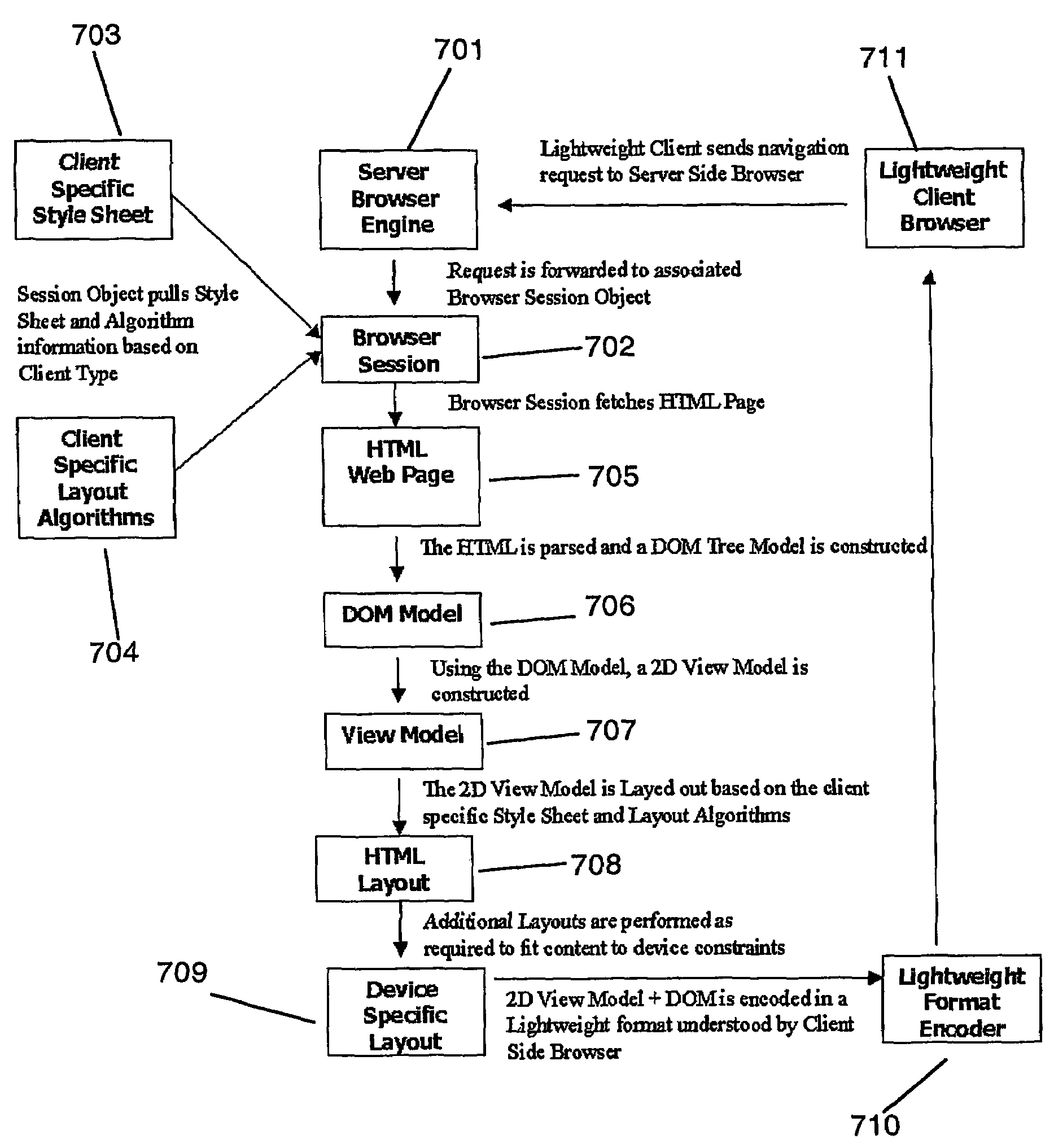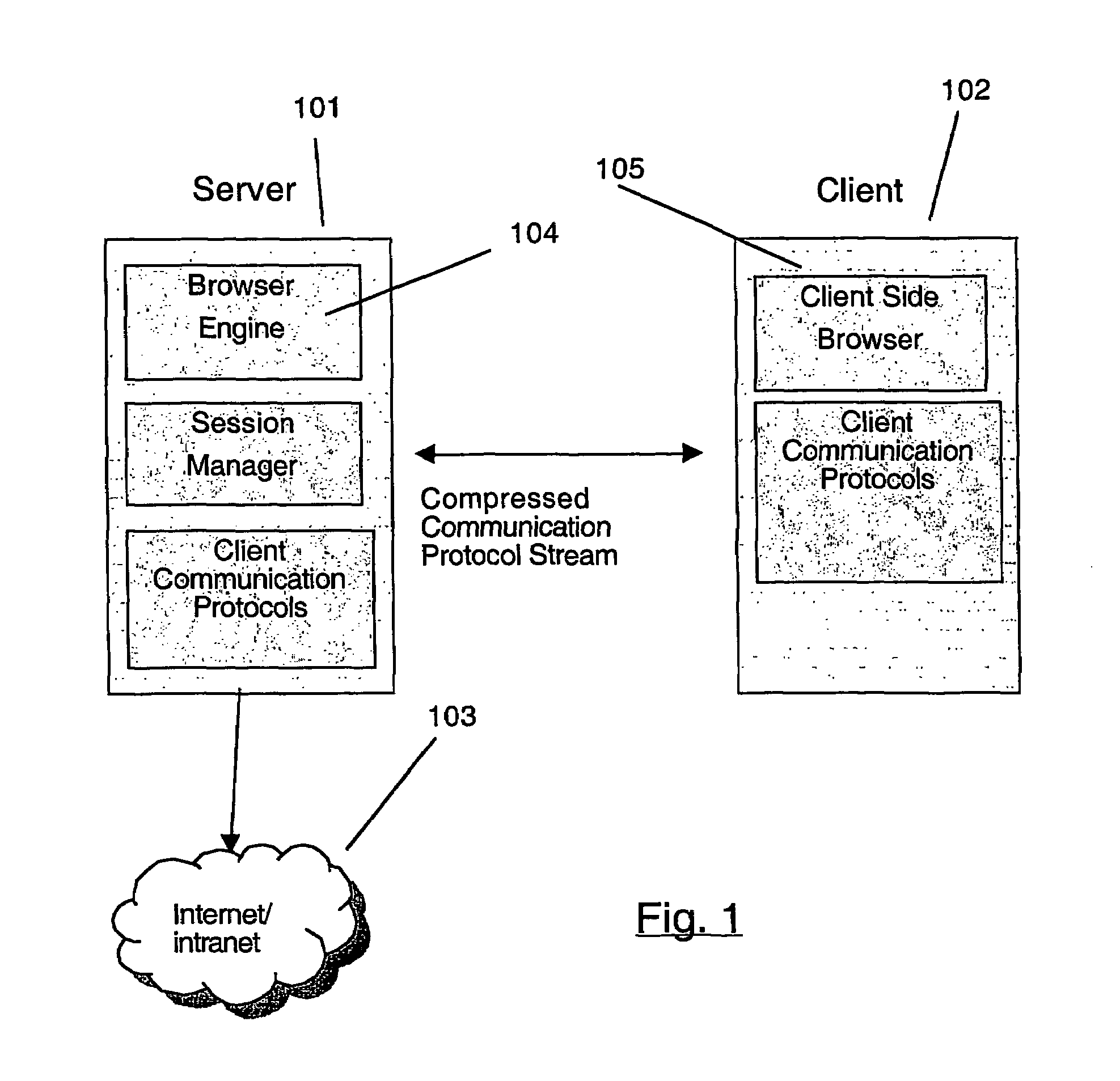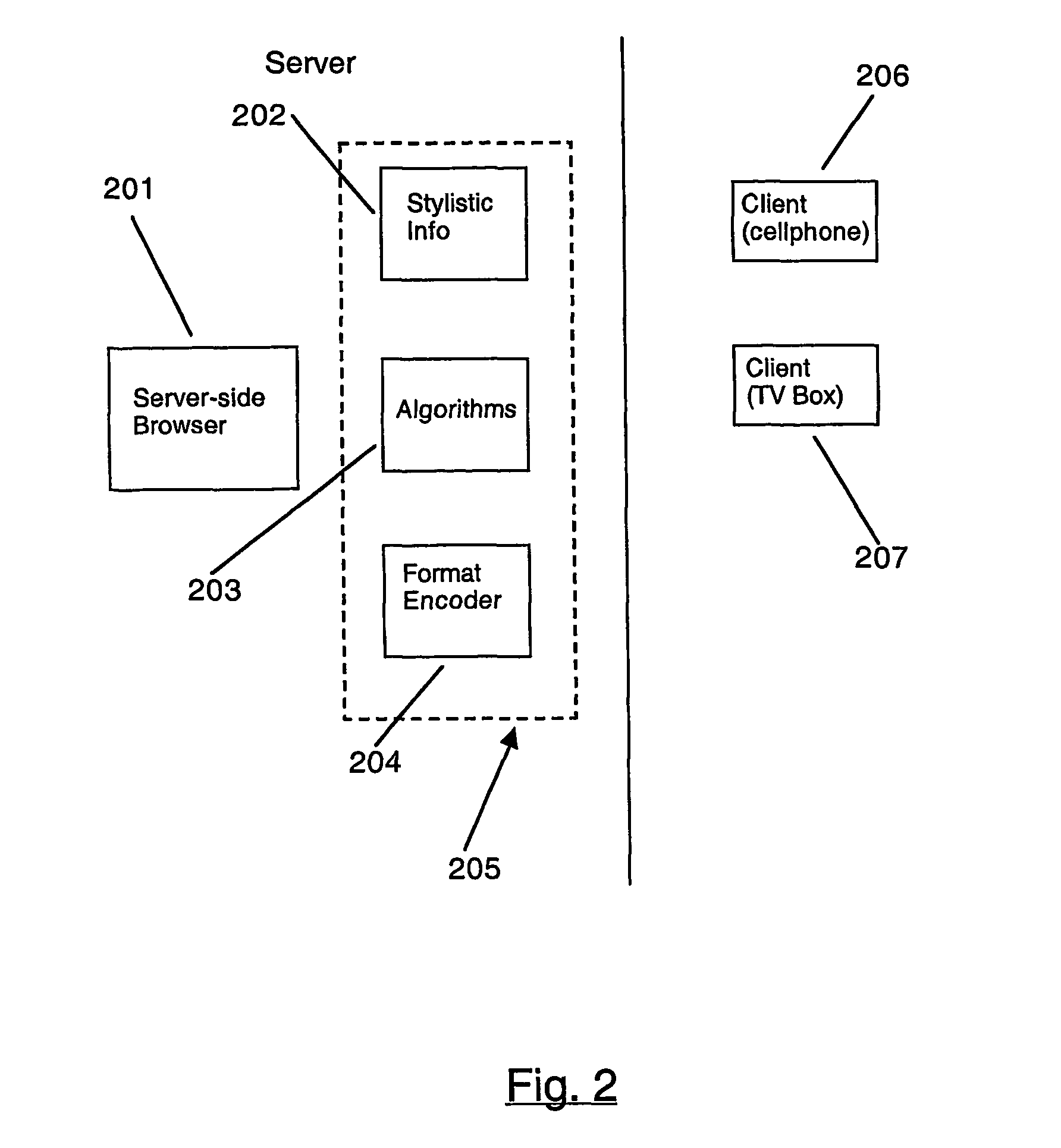Server-based browser system
a server-based browser and browser technology, applied in the field of web browsing technology, can solve the problems of large amount of cpu and ram required to execute, and inability to be mobile, etc., and achieve the effect of increasing the processing power and ram of the device, and increasing the processing power of the devi
- Summary
- Abstract
- Description
- Claims
- Application Information
AI Technical Summary
Benefits of technology
Problems solved by technology
Method used
Image
Examples
Embodiment Construction
[0027]The invention is embodied in a server-based browser system. A system according to the invention offloads heavy weight components of a traditional browser to a back end server. In addition, the invention provides a server-based browser system that leaves a lightweight client device with a minimal task of implementing a customizable interface to display a pre-rendered representation of Web pages.
[0028]A typical desktop browser requires a large amount of processor time to handle the load of obtaining Web page information and parsing the HTML code in the page. Secondary requests within the HTML code also require a large amount of processing time. Simple client devices such as PDAs, cellphones, and low CPU power set top boxes cannot handle the amount of processing power required to perform typical Web browsing.
[0029]Additionally, bandwidth on devices such as cellphones are limited and are charged to the user on a byte basis. This means that the large data transfers involved in typi...
PUM
 Login to View More
Login to View More Abstract
Description
Claims
Application Information
 Login to View More
Login to View More - R&D
- Intellectual Property
- Life Sciences
- Materials
- Tech Scout
- Unparalleled Data Quality
- Higher Quality Content
- 60% Fewer Hallucinations
Browse by: Latest US Patents, China's latest patents, Technical Efficacy Thesaurus, Application Domain, Technology Topic, Popular Technical Reports.
© 2025 PatSnap. All rights reserved.Legal|Privacy policy|Modern Slavery Act Transparency Statement|Sitemap|About US| Contact US: help@patsnap.com



